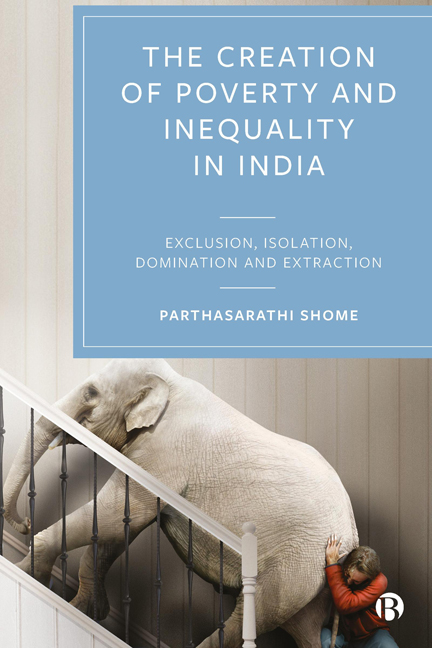Book contents
- Frontmatter
- Dedication
- Contents
- List of Figures and Tables
- Preface
- 1 Introduction
- Part I Macro-Economy and Human Development
- Part II Sources of Inequality and Poverty
- Part III Sectoral Effects
- Part IV Radical Humanism
- Appendix 2.1 Cash Use in India: A Cross-Country Comparison
- Appendix 2.2 Macro-Economic Comparisons: Selected Economies
- Appendix 4.1 Selected Country Tables
- Appendix 5.1 Evidence on Inequality in the US
- Appendix 8.1 Impact of Land Policy
- Appendix 11.1 Impact of Asset Transfer on the Poor
- Index
Appendix 11.1 - Impact of Asset Transfer on the Poor
Published online by Cambridge University Press: 18 January 2024
- Frontmatter
- Dedication
- Contents
- List of Figures and Tables
- Preface
- 1 Introduction
- Part I Macro-Economy and Human Development
- Part II Sources of Inequality and Poverty
- Part III Sectoral Effects
- Part IV Radical Humanism
- Appendix 2.1 Cash Use in India: A Cross-Country Comparison
- Appendix 2.2 Macro-Economic Comparisons: Selected Economies
- Appendix 4.1 Selected Country Tables
- Appendix 5.1 Evidence on Inequality in the US
- Appendix 8.1 Impact of Land Policy
- Appendix 11.1 Impact of Asset Transfer on the Poor
- Index
Summary
Balboni et al. (2020) considered the impact of a small transfer of an asset in a study carried out in Bangladesh. Villager groups who were given one milch cow did significantly better in earning future incomes than did comparable groups who did not receive the asset. They used data from Bandiera et al. (2017) pertaining to a region in Northern Bangladesh on 23,000 households living in 1,309 villages in the 13 poorest districts in the country. Of these households, over 6,000 were considered extremely poor; the lack of opportunity prevented 96 per cent of the sample villagers from undertaking presumably a preferred optimal occupation since access to opportunities depended on initial wealth.
The researchers used a transfer programme comprising the random allocation of an asset – milch cow – in 2007 that gave some of the poorest women in Bangladesh access to the same work opportunities as their wealthier counterparts in the same villages. The livestock was transferred jointly to a finite number of poor households versus those who did not receive such transfer. Monga, the selected region, was a famine-prone region which experienced irregular demand for casual wage labour mainly employed in agriculture and domestic service. They faced high grain prices, extreme poverty and food insecurity. The richer were usually self-employed and were found in livestock rearing and land cultivation. Productive assets set the rich and poor apart – the former possessing 94 times higher assets than the latter on average.
Exploiting variations in initial endowments, they concluded that, if a programme pushed individuals over a threshold level of initial assets, then they could get out of persistent poverty. In fact, transferees continued to acquire new assets on their own that, combined with own labour, generated further income, generating an accelerator perhaps. But if the threshold was not crossed, for example by those whose baseline assets were so low that the transfer could not heave them over the threshold, then they slid back, and were trapped back in poverty. Thus a poverty trap did exist.
Another study by Bari et al. (2021) focused in Pakistan analysed the impact of loans tied to the hire-purchase of assets for business purposes.
- Type
- Chapter
- Information
- The Creation of Poverty and Inequality in IndiaExclusion, Isolation, Domination and Extraction, pp. 316 - 317Publisher: Bristol University PressPrint publication year: 2023



